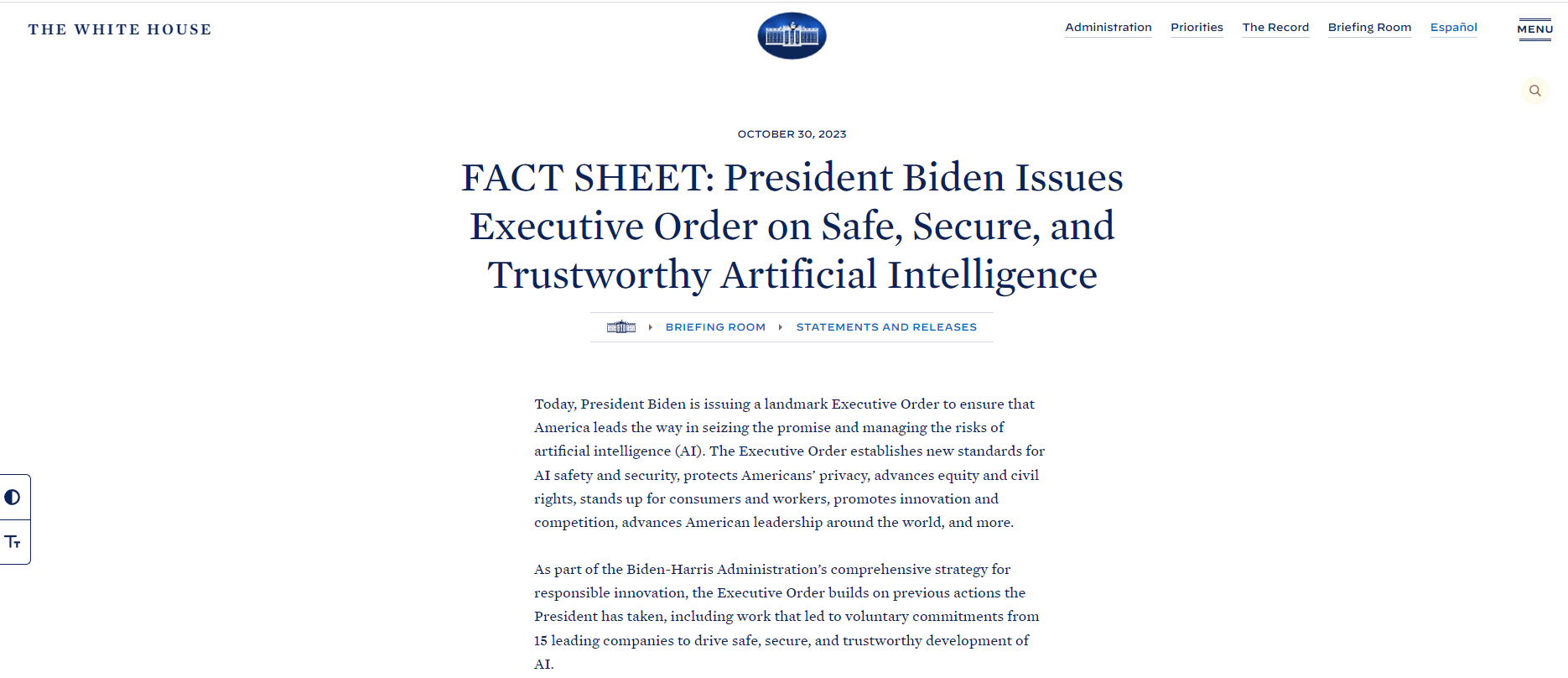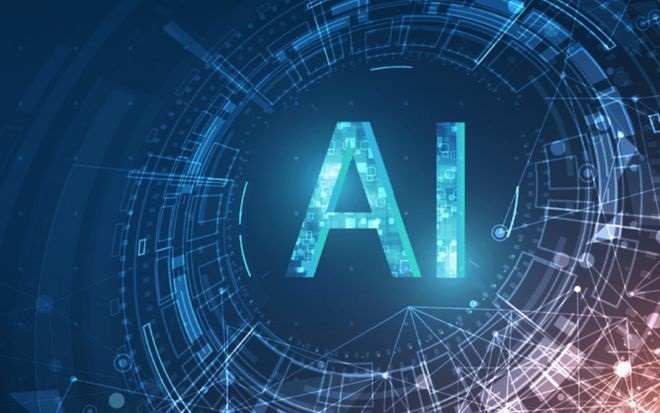Latest Regulatory Action! US President Signs First AI Executive Order
On Monday (October 30), U.S. President Joe Biden signed a comprehensive new executive order on AI, the first legal action taken by the United States against AI, and a number of AI-related technology stocks rose in response.。
On Monday, President Joe Biden signed a comprehensive executive order on AI, the first legal action taken by the United States against AI.。

The executive order is divided into eight parts:
● New standards for AI safety: including requiring developers of top AI systems to share their safety test results and other critical information with the U.S. government; developing strong new standards for biosynthetic screening to protect against the risk of using AI to design hazardous biological materials; establishing standards for detecting AI-generated content and validating official content; developing national security memos to guide further actions on AI and safety, and more。
● Protecting citizens' privacy: The government's direction to take action includes protecting Americans' privacy by prioritizing federal support for accelerating the development and use of privacy-preserving technologies; funding research coordination networks to drive rapid breakthroughs and developments to strengthen privacy-preserving research and technologies; evaluating how agencies collect and use commercial information; and developing guidelines for federal agencies to evaluate the effectiveness of privacy-preserving technologies.。
Promote fairness and civil rights: To ensure that AI promotes fairness and civil rights, the actions the government directs include providing clear guidance to landlords, federal welfare programs and federal contractors to prevent AI algorithms from being used to exacerbate discrimination; ensuring fairness throughout the criminal justice system by developing best practices for the use of AI in multiple areas of sentencing, parole and probation, pre-trial release and detention, etc.
Consumer, patient and student protection: This part of the government's directive includes promoting responsible use of AI in healthcare and developing affordable life-saving medicines; creating resources to support educators in deploying AI-supported educational tools, etc.。
Support for workers: government-directed actions include developing principles and best practices to guide workers, preventing employers from underpaying workers, unfairly evaluating job applications or affecting workers' organizational skills, thereby benefiting workers; studying the potential impact of AI on the labor market, etc.。
Promote innovation and competition: Promote AI research across the United States through national AI research resource pilots; provide technical assistance and resources to small developers and entrepreneurs, help small businesses commercialize AI breakthroughs, and more
● Enhance U.S. leadership in AI: including working with international partners and standards organizations to accelerate the development and implementation of key AI standards, ensuring that technologies are safe, reliable, and interoperable; and promoting the safe, responsible, and rights-preserving development and deployment of AI abroad to solve global challenges.。
Ensuring responsible and effective government use of AI: including issuing guidelines for agencies using AI; helping agencies acquire designated AI products and services faster, cheaper, and more effectively; and accelerating the recruitment of AI professionals to sectors in need.。

For this new executive order, the United States from all walks of life to discuss。
IBM CEO Arvind Krishna said in a statement that he "welcomes" the executive order.。Krishna said: "We are pleased that this executive order creates new opportunities for innovation and research in security and risk management of AI-based models.。"
Bradley Tusk, CEO of venture capital firm Tusk Ventures, also welcomed。But he said tech companies may avoid sharing proprietary data with the government for fear it could be made available to competitors.。Tusk also said that if the executive order does not have a real enforcement mechanism, then compliance may be very limited.。
While the order focuses on mandatory sharing of the results of security tests conducted by companies, it does not require companies to share details of their training sets with governments or security researchers, a major concern for many AI security researchers.。Only by knowing the details of the training set can researchers understand the true capabilities of AI models。Major current AI developers, such as OpenAI, keep their datasets secret。
Renowned AI research expert Gary Marcus said on Monday that there was "a lot to like" in the order.。Marcus argues that the executive order significantly addresses all the risks posed by AI, including bias, civil rights, algorithmic discrimination, criminal justice, national security, and more.。However, the effectiveness of this order depends on the specific wording of the order and the strength of implementation of each request.。
Marcus said it's a good start, but the order is not the same as the FDA's process for approving new drugs, and he would prefer to see AI adopt this approach.。"When the FDA approves a drug, they (look for) evidence that the benefits outweigh the risks.。Paperwork alone is not enough。"What we really need is a peer review process by independent scientists.。"
A new poll by the Artificial Intelligence Policy Institute (AIPI) shows that nearly 70% of voters across the political spectrum support the executive order, while only 15% oppose it.。
But there are also professionals who have questioned the executive order.。Dr. Sasha Luccioni, a well-known AI researcher, said it was wary of conducting internal reviews behind closed doors.。
Luccioni believes the key to AI safety is transparency, and the new White House order doesn't address that.。Luccioni said what is needed now is concrete action to make open AI systems more transparent and robust.。
Dr Srinivas Mukkamala, Ivanti's chief product officer and head of AI authority, also said it was important to address the risks posed by today's AI models and not just focus on the more serious risks of future models.。
·Original
Disclaimer: The views in this article are from the original Creator and do not represent the views or position of Hawk Insight. The content of the article is for reference, communication and learning only, and does not constitute investment advice. If it involves copyright issues, please contact us for deletion.